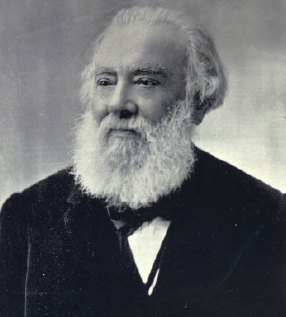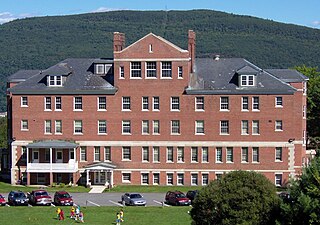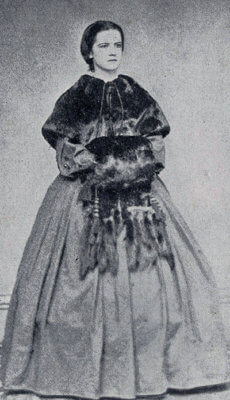
Alexander Graham Bell was a Scottish-born Canadian-American inventor, scientist and engineer who is credited with patenting the first practical telephone. He also co-founded the American Telephone and Telegraph Company (AT&T) in 1885.

Visible Speech is a system of phonetic symbols developed by British linguist Alexander Melville Bell in 1867 to represent the position of the speech organs in articulating sounds. Bell was known internationally as a teacher of speech and proper elocution and an author of books on the subject. The system is composed of symbols that show the position and movement of the throat, tongue, and lips as they produce the sounds of language, and it is a type of phonetic notation. The system was used to aid the deaf in learning to speak.
Oralism is the education of deaf students through oral language by using lip reading, speech, and mimicking the mouth shapes and breathing patterns of speech. Oralism came into popular use in the United States around the late 1860s. In 1867, the Clarke School for the Deaf in Northampton, Massachusetts, was the first school to start teaching in this manner. Oralism and its contrast, manualism, manifest differently in deaf education and are a source of controversy for involved communities. Listening and Spoken Language, a technique for teaching deaf children that emphasizes the child's perception of auditory signals from hearing aids or cochlear implants, is how oralism continues on in the current day.

Alexander Melville Bell was a teacher and researcher of physiological phonetics and was the author of numerous works on orthoepy and elocution.

Mabel Gardiner Hubbard Bell was an American businesswoman, and the daughter of Boston lawyer Gardiner Green Hubbard. She was the wife of Alexander Graham Bell, inventor of the first practical telephone.

The Nebraska School for the Deaf, or NSD, was a residential school for Deaf students in kindergarten through Grade Twelve at 3223 North 45th Street in Omaha, Nebraska, United States. Founded in 1869, the school closed in 1998. The school attracted national attention throughout its existence, first for controversial teaching practices and then for its closure.

Alexander Graham Bell honors and tributes include honors bestowed upon him and awards named for him.

The Volta Laboratory and the Volta Bureau were created in Georgetown, Washington, D.C., by Alexander Graham Bell.

The Austine School for the Deaf, now closed, in Brattleboro, Vermont, was an independent, coeducational day and residential school for deaf and hard-of-hearing children age four to eighteen from New England and New York.

Deaf education is the education of students with any degree of hearing loss or deafness. This may involve, but does not always, individually-planned, systematically-monitored teaching methods, adaptive materials, accessible settings, and other interventions designed to help students achieve a higher level of self-sufficiency and success in the school and community than they would achieve with a typical classroom education. There are different language modalities used in educational setting where students get varied communication methods. A number of countries focus on training teachers to teach deaf students with a variety of approaches and have organizations to aid deaf students.
Auditory-verbal therapy is a method for teaching deaf children to listen and speak using their hearing technology. Auditory-verbal therapy emphasizes listening and seeks to promote the development of the auditory brain to facilitate learning to communicate through talking. It is based on the child's use of optimally fitted hearing technology.
The history of deaf education in the United States began in the early 1800s when the Cobbs School of Virginia, an oral school, was established by William Bolling and John Braidwood, and the Connecticut Asylum for the Deaf and Dumb, a manual school, was established by Thomas Hopkins Gallaudet and Laurent Clerc. When the Cobbs School closed in 1816, the manual method, which used American Sign Language, became commonplace in deaf schools for most of the remainder of the century. In the late 1800s, schools began to use the oral method, which only allowed the use of speech, as opposed to the manual method previously in place. Students caught using sign language in oral programs were often punished. The oral method was used for many years until sign language instruction gradually began to come back into deaf education.

Caroline Ardelia Yale was an American inventor and educator who revolutionized the teaching of hearing-impaired students. A collaborator of Alexander Graham Bell, her phonetic system became the most widely used in America. She worked most of her career at the Clarke School for the Deaf, eventually becoming Principal of the institution, and was involved in raising funds for the deaf through leading figures such as her childhood friend, Grace Coolidge, First Lady of the United States. She was also director and cofounder of the Alexander Graham Bell Association for the Deaf and Hard of Hearing.

The Deaf rights movement encompasses a series of social movements within the disability rights and cultural diversity movements that encourages deaf and hard of hearing to push society to adopt a position of equal respect for them. Acknowledging that those who were Deaf or hard of hearing had rights to obtain the same things as those hearing lead this movement. Establishing an educational system to teach those with Deafness was one of the first accomplishments of this movement. Sign language, as well as cochlear implants, has also had an extensive impact on the Deaf community. These have all been aspects that have paved the way for those with Deafness, which began with the Deaf Rights movement.

Harriet Burbank Rogers was an American educator, a pioneer in the oral method of instruction of the deaf. She was the first director of Clarke School for the Deaf, the first U.S. institution to teach the deaf by articulation and lip reading rather than by signing. Her advocacy for oralist instruction children increased utilization of oral-only communication models in many American schools.
HASA is a social benefit 501(c)(3) organization located in Baltimore, Maryland, that specializes in facilitating communication. Established in 1926, the organization provides special education services through Gateway School, audiology and speech-language services through its Clinical Services Department, and interpreting services for the deaf through its CIRS Interpreting Department.

Lillie Eginton Warren was an American educator and an author of work upon defective speech. She was the inventor of the Warren Method of Expression Reading and Numerical Cipher. This method was a patented series of pictures of the expressions of the facial muscles produced by articulate speech by which it was possible for a deaf person to understand conversation by the eyes alone. Until the 1890s, deaf education was limited to children, but Warren and her assistant, Edward Nichie, expanded the scope of work to adults.
The Language Equality and Acquisition for Deaf Kids (LEAD-K) campaign is a grassroots organization. Its mission is to work towards kindergarten readiness for deaf and hard-of-hearing children by promoting access to both American Sign Language (ASL) and English. LEAD-K defines kindergarten readiness as perceptive and expressive proficiency in language by the age of five. Deaf and hard-of-hearing children are at high risk of being cut off from language, language deprivation, which can have far-reaching consequences in many areas of development. There are a variety of methods to expose Deaf and hard-of-hearing children to language, including hearing aids, cochlear implants, sign language, and speech and language interventions such as auditory/verbal therapy and Listening and Spoken Language therapy. The LEAD-K initiative was established in response to perceived high rates of delayed language acquisition or language deprivation displayed among that demographic, leading to low proficiency in English skills later in life.
Helen Louise Hulick Beebe was an American educator and pioneer of auditory-verbal therapy. In 1938, she made headlines when a judge jailed her for wearing trousers while appearing as a witness in court.

Sarah Fuller was an American educator.














